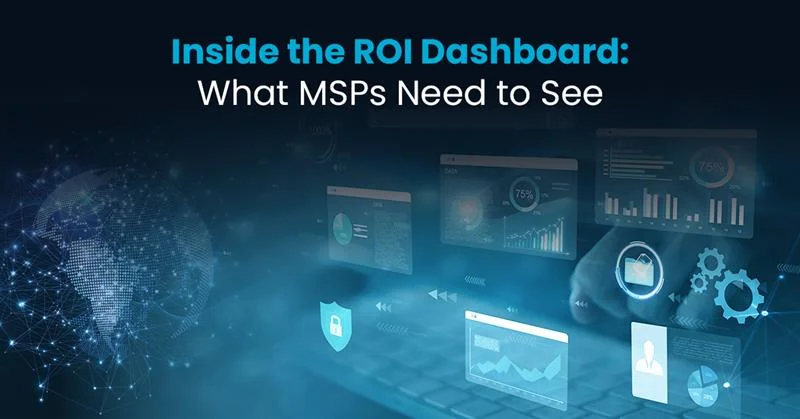Understanding SLA vs. OLA is crucial when you’re juggling 15 client escalations, your internal teams are pointing fingers, and that critical server issue from Tuesday still isn’t resolved. Sound familiar? The difference between thriving MSPs and struggling ones often comes down to this fundamental distinction.
Most MSPs know they need service level agreements, but here’s what they miss – without proper operational level agreements backing those client promises, you’re setting yourself up for failure. Let’s cut through the confusion and get this sorted once and for all.
What is SLA? Understanding service level agreement definition
What is a service-level agreement (SLA) in the simplest terms? It’s your contract with clients that spells out exactly what they can expect from your services. Think response times, uptime guarantees, and resolution commitments. When you promise 99.9% uptime or 4-hour response times, that’s your SLA talking.
The service level agreement definition goes deeper than just promises though. The average cost of a data breach in 2024 is $4.88M, according to IBM’s 2024 report. Your SLA isn’t just paperwork – it’s your shield against liability and your roadmap to consistent service delivery.
Service level agreement time specifications and core components
Service level agreement time commitments form the backbone of any solid SLA. These aren’t just random numbers you pulled from thin air. They should reflect:
- Response times: how quickly you acknowledge issues
- Resolution times: maximum time to fix different severity levels
- Uptime guarantees: system availability percentages
- Escalation procedures: what happens when things go wrong
What is SLA without measurable metrics? Just expensive promises you can’t track.
What are the 3 types of SLAs every MSP should know?
Here are the 3 types of SLAs that successful MSPs implement:
- Customer-based SLAs: individual agreements tailored to specific clients. Your enterprise client gets different service level agreement time commitments than your small business accounts.
- Service-based SLAs: standardized agreements for specific services. Email support might have 2-hour response times while network monitoring gets 30-minute commitments.
- Multi-level SLAs: hybrid approaches combining customer and service elements. This gives you flexibility while maintaining consistency across your client base.
What is OLA definition? Breaking down operational level agreements
Here’s where most MSPs drop the ball. An operational-level agreement (OLA) definition is simple: it’s your internal agreement that ensures your teams can deliver on those external SLA promises. While SLA focuses on client-facing commitments, operational level agreement documents handle the behind-the-scenes coordination.
An OLA defines interdependent relationships in support of a SLA. Without proper operational level agreement structures, your SLA becomes a house of cards waiting to collapse.
How OLA definition supports SLA delivery
Your operational level agreement acts as the internal engine driving external SLA performance. It defines:
- Which team handles initial triage (and in what timeframe)
- When issues escalate between departments
- Resource allocation during peak periods
- Communication protocols between technical teams
OLA definition isn’t just bureaucracy – it’s survival. When your level 1 team knows exactly when to escalate to level 2, and level 2 understands their service level agreement time commitments to internal handoffs, your external SLA promises to become achievable.
SLA vs. OLA: key differences that make-or-break MSPs
The SLA vs.OLA distinction isn’t academic – it’s practical. These indicators help in evaluating the performance of internal teams. Metrics might include the number of tickets resolved within the SLA, customer satisfaction scores, or system uptime percentage.
External vs. internal focus in SLA vs. OLA frameworks
SLA vs. OLA comes down to audience and accountability:
SLAs target clients:
- Legal binding agreements with penalty clauses
- Client-friendly language avoiding technical jargon
- Focus on business outcomes and user experience
- External performance metrics and reporting
OLAs target internal teams:
- Internal coordination documents
- Technical specifications and procedures
- Team-to-team handoff requirements
- Internal performance tracking and optimization
Why MSPs need both SLA vs. OLA structures
You can’t have successful SLA vs. OLA implementation by choosing one over the other. They work together:
Your service level agreement definition promises clients 2-hour response times. Your operational level agreement ensures your level 1 team acknowledges tickets within 30 minutes, escalates complex issues within 60 minutes, and maintains communication every 30 minutes until resolution.
Common SLA vs. OLA implementation mistakes
Most MSPs mess up SLA vs. OLA in predictable ways:
- Mixing audiences: using technical language in client SLAs or business metrics in operational agreements
- Misaligned timing: service level agreement time commitments that don’t account for internal handoff delays
- Missing connections: creating OLAs that don’t support SLA delivery requirements
- Over-promising: external commitments that exceed internal operational level agreement capabilities
How to create effective SLA vs. OLA documents
Building solid SLA vs. OLA frameworks requires systematic thinking and realistic planning.
Best practices for service level agreement time specifications
Service level agreement time commitments should be:
- Achievable: based on actual internal capabilities, not wishful thinking
- Measurable: clear metrics that both parties understand
- Tiered: different response times for different severity levels
- Realistic: account for holidays, maintenance windows, and human limitations
Start conservative with service level agreement time commitments. It’s easier to exceed expectations than explain why you missed them.
Building strong operational level agreement frameworks
Effective operational level agreement documents need:
- Clear handoff procedures: who does what, when, and how
- Escalation triggers: specific criteria for moving issues between teams
- Communication requirements: internal reporting and status update schedules
- Resource allocation rules: priority systems during high-demand periods
Your operational level agreement should read like a playbook, not a policy manual.
Measuring success in SLA vs. OLA performance
You can’t improve what you don’t measure. Both SLA vs. OLA performance requires different metrics and monitoring approaches.
Key metrics for service level agreement time tracking
Client-facing service level agreement time metrics focus on:
- Response time compliance: percentage of tickets acknowledged on time
- Resolution time performance: average and maximum resolution times by severity
- Uptime delivery: actual vs. promised availability percentages
- Client satisfaction scores: how well you’re meeting expectations beyond just timing
Track these metrics religiously. Common metrics include response time, resolution time, uptime percentage, and customer satisfaction. Your SLA vs. OLA success depends on consistent measurement and improvement.
Internal OLA performance indicators
Operational level agreement metrics track internal efficiency:
- Handoff speed: time between team escalations
- Communication quality: frequency and clarity of internal updates
- Resource utilization: team workload distribution and availability
- Process compliance: how well teams follow operational level agreement procedures
SLA vs. OLA comparison chart
| Aspect | SLA | OLA |
| Audience | External clients | Internal teams |
| Language | Business-focused | Technical/operational |
| Enforcement | Legal/contractual | Performance management |
| Metrics | Client satisfaction, uptime | Team efficiency, handoffs |
| Updates | Quarterly reviews | Monthly optimization |
| Penalties | Financial/contract | Process improvement |
Conclusion: streamline your SLA vs. OLA management with IT by design
Getting SLA vs. OLA balance right isn’t just important – it’s survival. But here’s the reality: most MSPs struggle with this balance, leading to missed commitments, frustrated clients, and burned-out teams.
The real challenge:
- Creating realistic service level agreement time commitments
- Building operational level agreement frameworks that work
- Aligning internal capabilities with external promises
- Measuring and improving SLA vs. OLA performance consistently
IT by Design’s co-managed services solve these exact challenges. Our expert-led approach helps MSPs develop robust service level agreement definition frameworks while building internal operational level agreement structures that deliver results.
Why choose IT By Design co-managed services:
- Proven frameworks: Battle-tested SLA vs. OLA templates and processes
- Expert guidance: Learn from MSPs who’ve scaled successfully
- Performance optimization: Continuous improvement systems for both external and internal agreements
- Risk mitigation: Avoid costly SLA breaches through better operational level agreement planning
Ready to transform your service delivery from reactive to proactive.
Schedule a call with us today and discover how to create SLA vs. OLA systems that drive client satisfaction, team efficiency, and business growth.
FAQs (frequently asked questions)
Q: what’s the main difference between SLA and OLA?
A: SLA vs. OLA differs in audience – SLAs are external commitments to clients, while OLAs are internal agreements ensuring teams can deliver on SLA promises.
Q: Wan you have an OLA without an SLA?
A: yes, operational level agreement documents can coordinate internal services even without external client SLAs, improving internal IT efficiency.
Q: How do SLAs and OLAs work together?
A: Operational level agreement frameworks ensure internal teams can meet service level agreement definition commitments by defining internal responsibilities and realistic timelines.
Q: Who manages SLA vs. OLA performance?
A: Account managers typically handle SLA client relationships, while operations managers focus on operational level agreement team coordination and performance.
Q: How often should you review SLA and OLA documents?
A: Review quarterly for strategic changes but monitor service level agreement time metrics continuously with monthly operational level agreement performance assessment.








